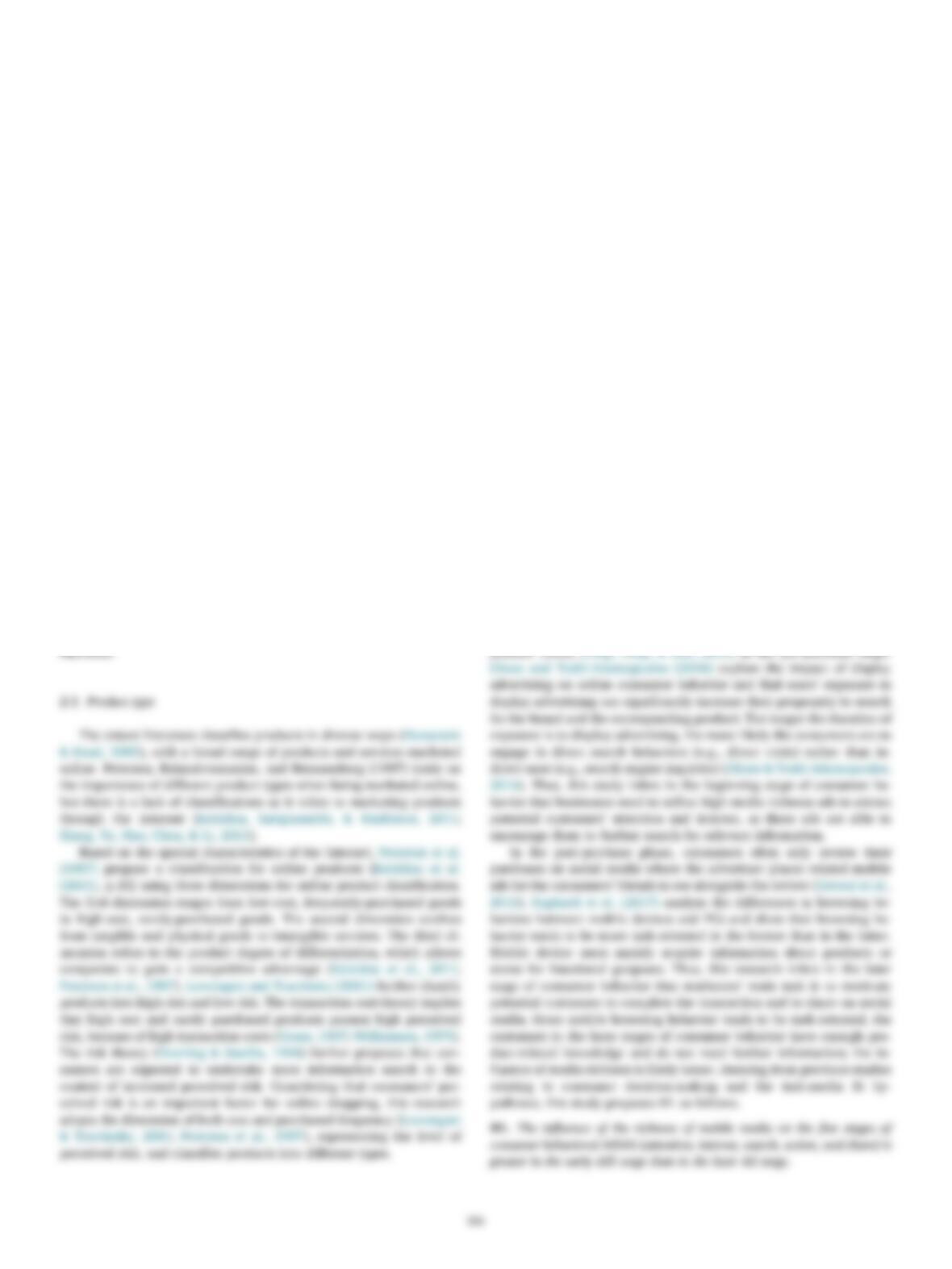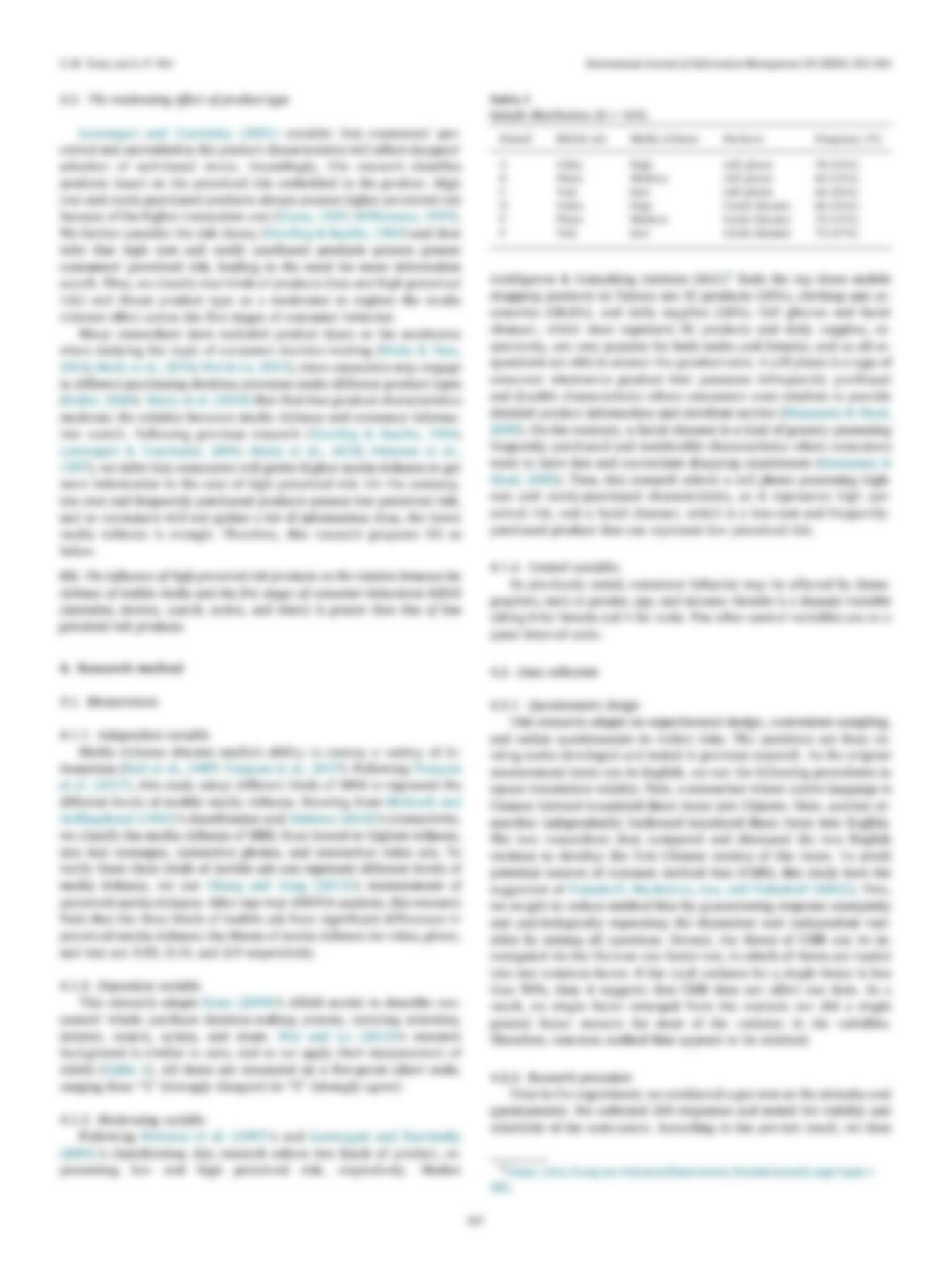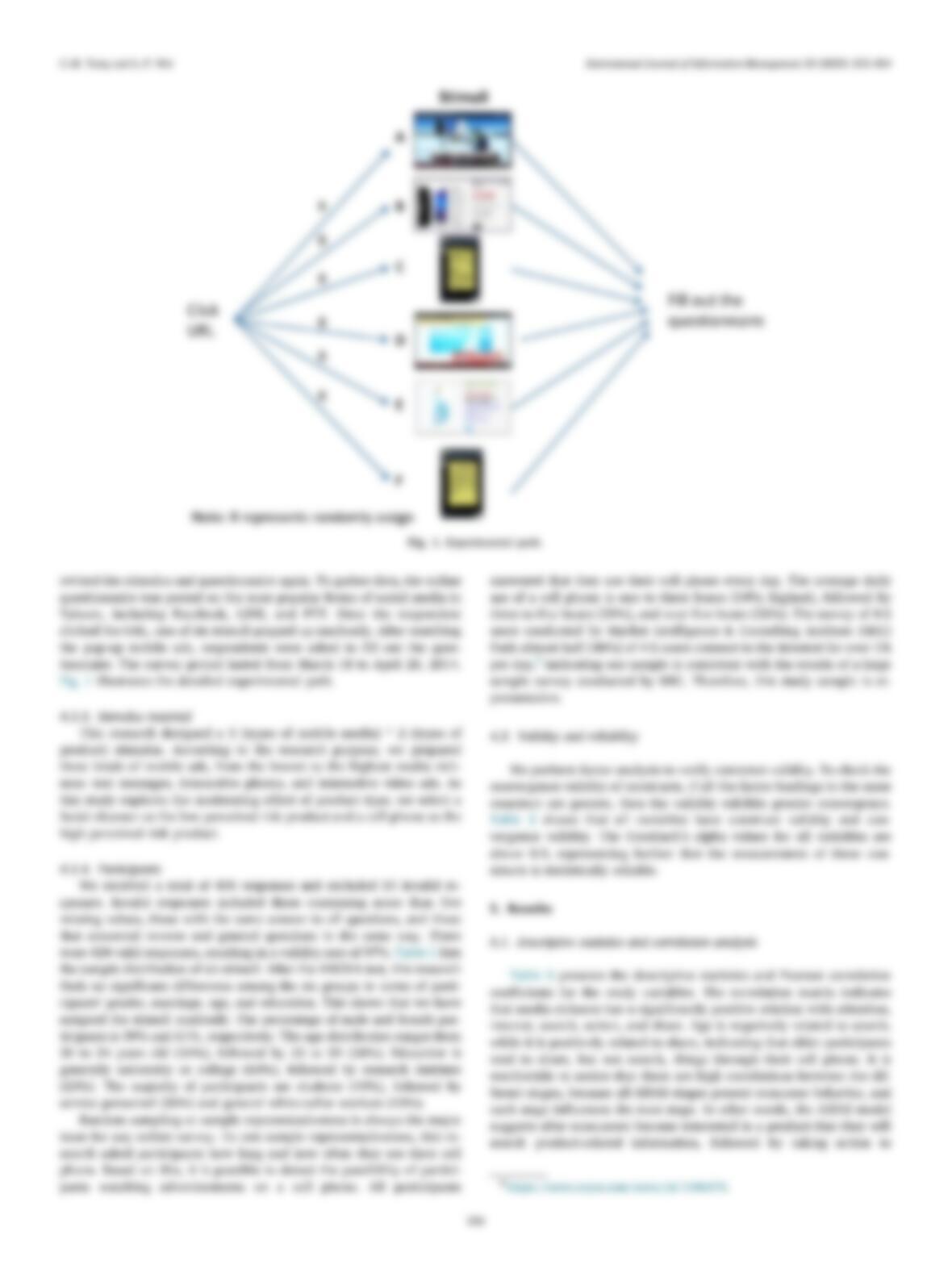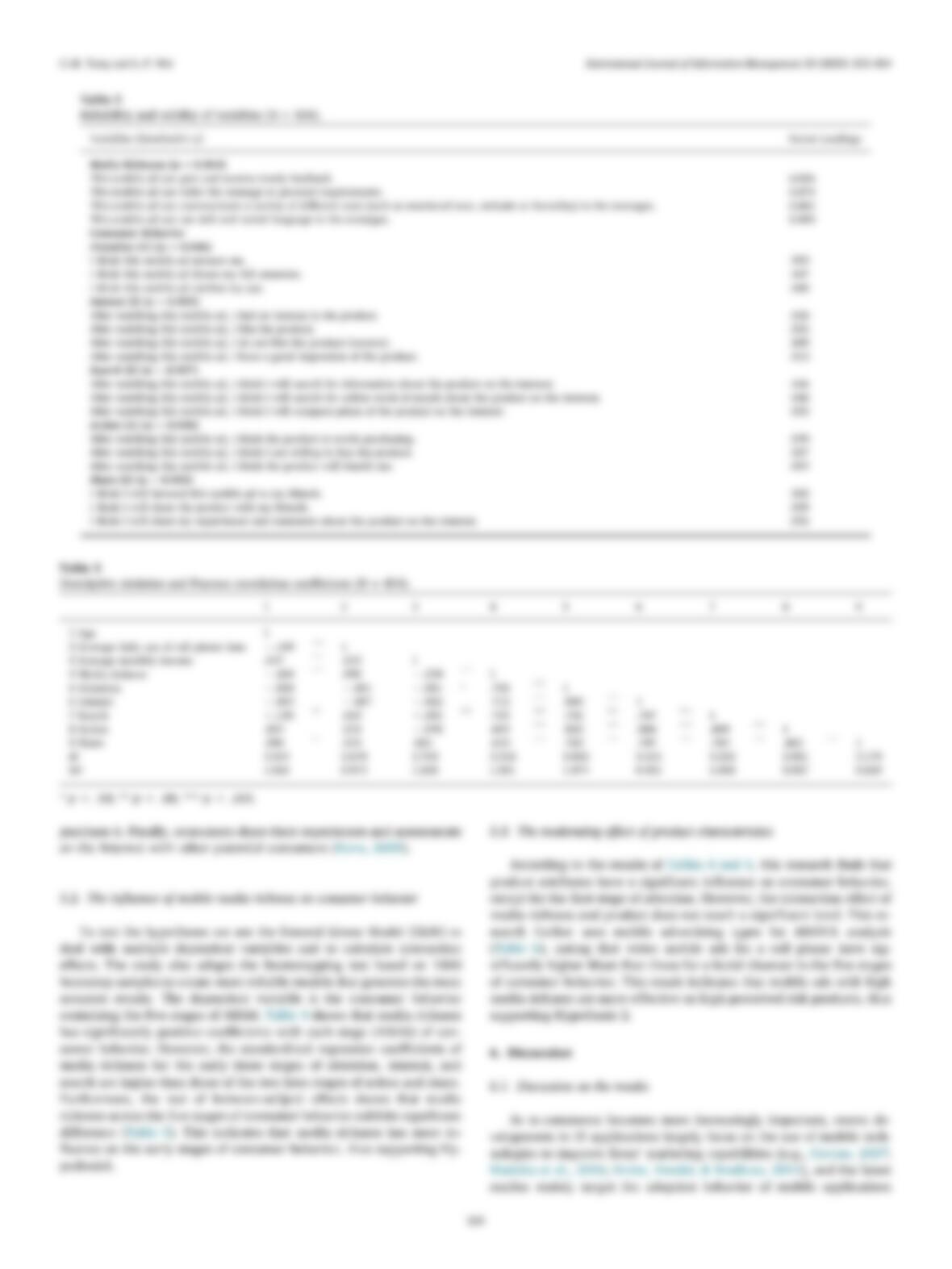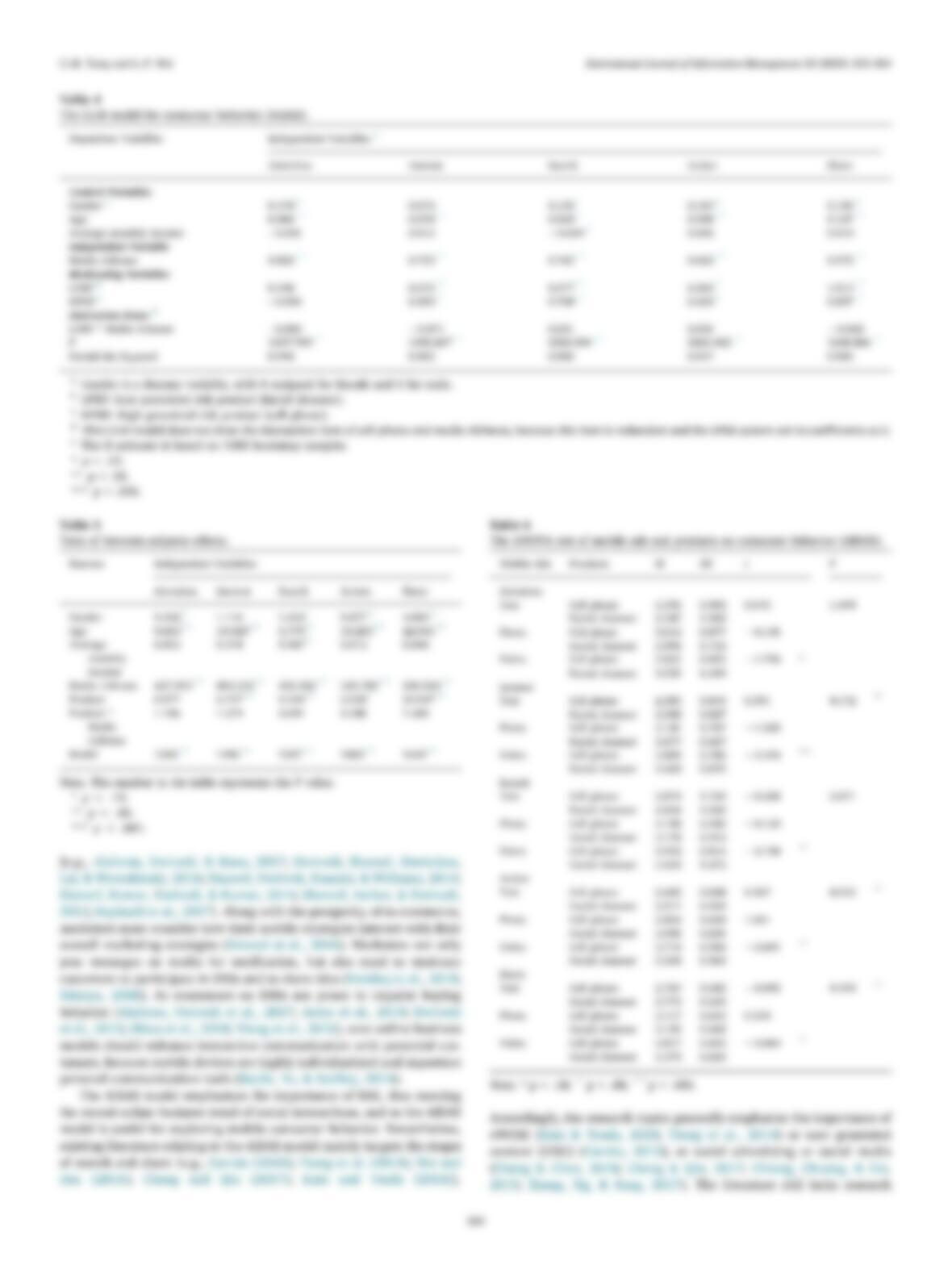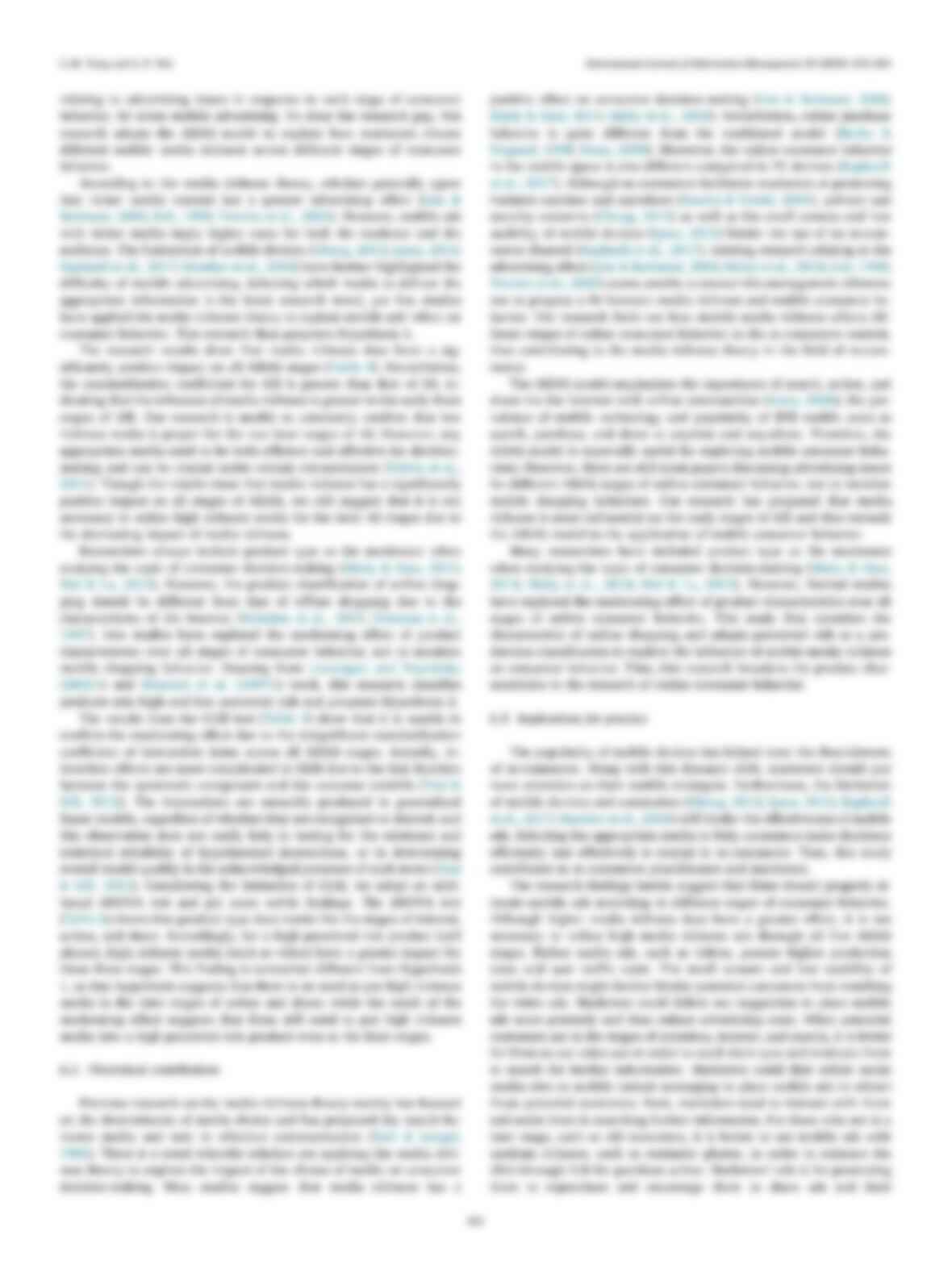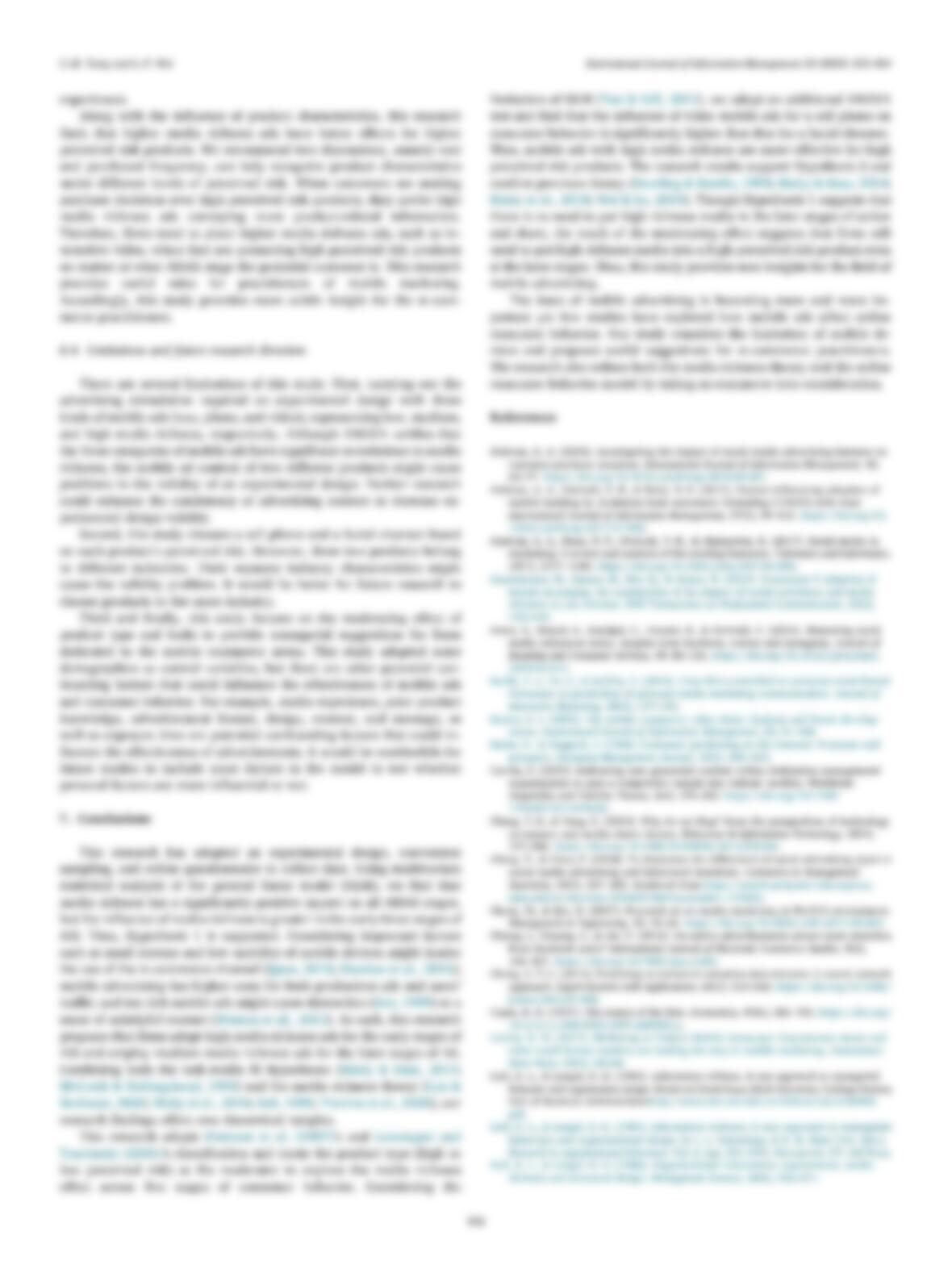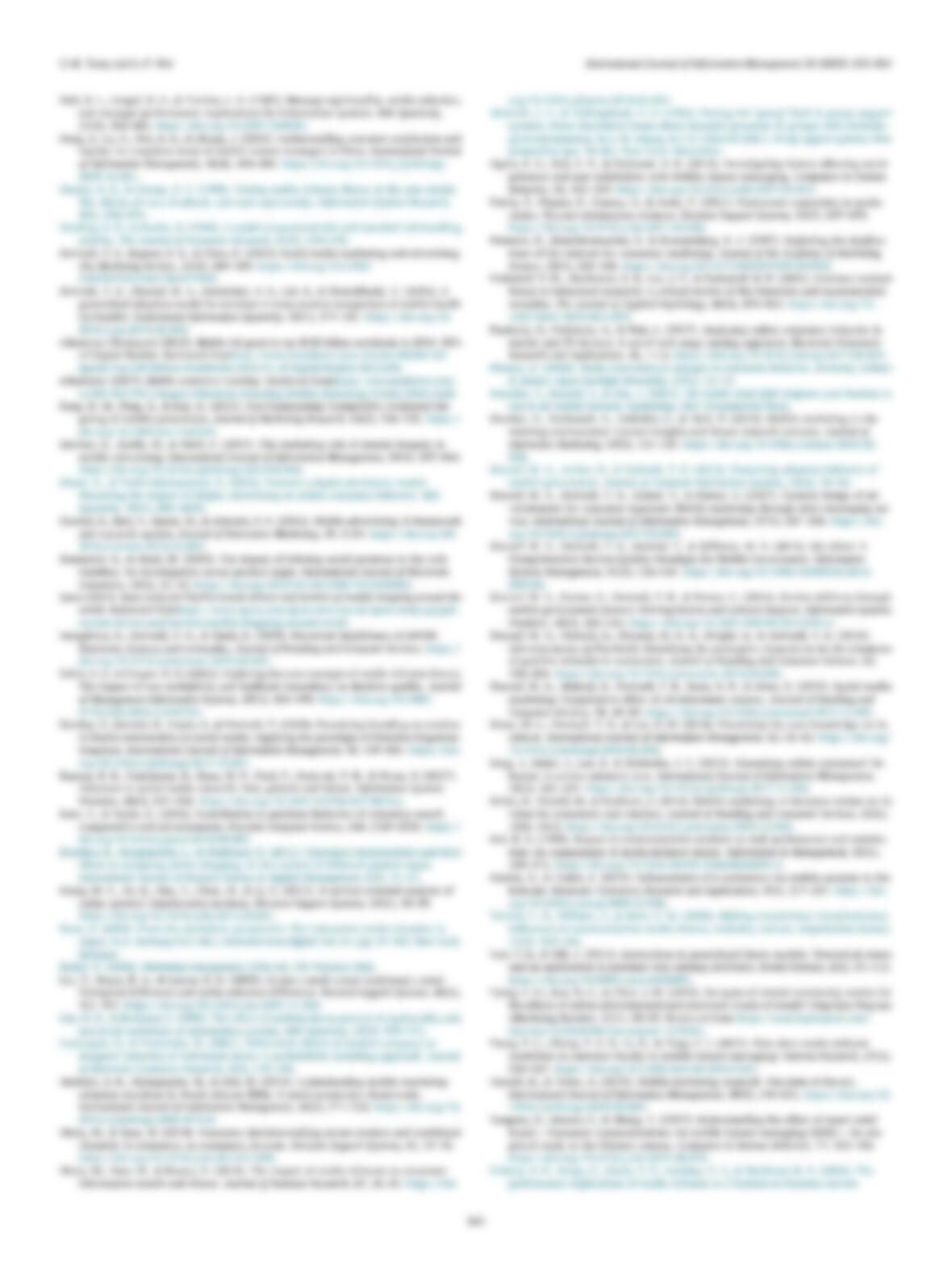through the Internet (Kono, 2009). In response to rapid technological
changes, Dentsu proposed a new model, AISAS (attention, interest,
search, action and share), which more accurately describes online
consumer behavior due to the interactive and personalized nature of the
Internet (Wei & Lu, 2013). The AISAS model of Dentsu suggests that
after consumers become interested in a product, they will search for
product-related information through the Internet, followed by taking
action to purchase it. Consumers subsequently share their experiences
and assessments over the Internet with other potential consumers,
feeding back to the search stage on the Internet (Kono, 2009). Thus,
marketers are not only posting messages on media for notification, but
they are also trying to assist consumers at obtaining detailed informa-
tion that they are interested in, making comparative studies, and
sharing actual feelings of use after purchasing with other consumers
(Ritsuya, 2008). Marketers even need to motivate customers to parti-
cipate in branding co-creation in social network sites (SNSs) (Kamboj,
Sarmah, Gupta, & Dwivedi, 2018).
Scholars further point out that the credibility of the introducer of
the advertisement (Shareef, Mukerji, Dwivedi, Rana, & Islam, 2019),
consumers’ attitudes toward SNSs advertisements (Shareef, Mukerji,
Alryalat, Wright, & Dwivedi, 2018), and customers’ perceived help-
fulness of online reviews (Ismagilova, Dwivedi, & Slade, 2019) are
crucial factors in persuading consumers to like social media-based
marketing and to make a purchase. As consumers have greater social
interactions with each other, consumers on SNSs are prone to impulse
buying behavior owing to such social interactions (Alalwan, Rana,
Dwivedi, & Algharabat, 2017;Arora, Bansal, Kandpal, Aswani, &
Dwivedi, 2019;Dwivedi, Kapoor, & Chen, 2015;Shiau, Dwivedi, & Lai,
2018;Xiang, Zheng, Lee, & Zhao, 2016); this has led to the increasing
importance of social interactions when researchers are exploring con-
sumer behavior in the m-commerce context. Marketers should first
utilize social media sites or mobile instant messaging to place mobile
ads to attract the audience’s attention and interest. Next, marketers
need to interact with potential customers and assist them in searching
for further information and promote them to make a purchase. Finally,
marketers should encourage customers to share ads or experiences with
their friends. The AISAS model emphasizes the importance of SAS
(search, action, and share) for Internet shopping (Kono, 2009), thus
meeting the recent online business trend of social interactions, and so
the AISAS model is useful for exploring mobile consumer behavior.
Under the development of the Internet, consumers tend to search
information via it and share their experiences with others, and so online
advertisements and users’ comments on social media have become the
main factor affecting consumers’ purchase decision (Kapoor et al.,
2017;Tseng, Kuo, & Chen, 2014). Grewal et al. (2016) first explore the
relationship between the consumer behavior process and the effec-
tiveness of mobile ads. Mobile ads can stimulate consumers’ recognition
of an unmet need and push them to go further for a purchase in their
immediate vicinity. In the post-purchase phase, consumers often review
their purchases on social media, where the advertiser in turn might
place related mobile ads for the consumers’ friends to see alongside the
review (Grewal et al., 2016). Thus, marketers need to put different
mobile ads according to consumers’ stage in the shopping process.
The limitations of mobile devices have made the influence of mobile
ads on consumer behavior more complex. Raphaeli et al. (2017) con-
clude there are three important characteristics of m-commerce. First,
mobile devices help facilitate transactions anytime and anywhere for
users and provide timely information (Sumita & Yoshii, 2010). Second,
m-commerce raises greater privacy and security concerns among users
(Chong, 2013). Third, the small screens and low usability of mobile
devices may hamper long and complex use of an m-commerce channel
(Ipsos, 2015). The first characteristic encourages marketers to apply
mobile advertising, while the second and third characteristics increase
the burden of mobile device users because of higher information ac-
quisition and search costs. As consumers increasingly use mobile de-
vices to access the Internet, it is important to understand how such use
is changing online behavior in m-commerce. Mobile advertising should
be more precise and have a better fit with the different statuses of
consumers.
2.2. Media richness theory
2.2.1. The concept of media richness
The media richness theory derives from the information processing
theory and refers to communication efficiency among individuals af-
fected by media fitness (Daft & Lengel, 1983,1984,1986). Media
richness denotes a medium’s ability to convey a variety of information
(Daft, Lengel, & Trevino, 1987;Vazquez, Dennis, & Zhang, 2017).
Communication media vary in the richness of information processed,
based on feedback capability, communication channels used, source,
and language (Daft & Lengel, 1983,1984). Richer media allow users to
communicate in a more immediate way, improving their understanding
of ambiguous messages (Dennis & Kinney, 1998).
From the perspective of the media richness theory, high performing
managers should match media having the appropriate amount of in-
formation richness with the characteristics of a specific task (Daft &
Lengel, 1986). Many researchers applied the media richness theory and
suggest that the content of mobile commercials determines their success
(Shareef et al., 2017). Researchers further note that media richness can
predict customers’ choice of communication media (Lee, Kozar, &
Larsen, 2009), decision quality (Kahai & Cooper, 2003), user satisfac-
tion, and usage of instant messaging applications (Anandarajan, Zaman,
Dai, & Arinze, 2010;Deng, Lu, Wei, & Zhang, 2010;Ogara, Koh, &
Prybutok, 2014). Tseng, Cheng, Li, and Teng (2017)) first explore how
media richness contributes to customer loyalty towards mobile instant
messaging (MIM). In general, the richer the media content is, the
greater is the advertising effect, because rich media is able to convey
more information (Lim & Benbasat, 2000;Suh, 1999;Trevino et al.,
2000).
In the m-commerce context, marketers should especially design
mobile ads with adequate information, because mobile devices have
small screens and possess low usability, which may hamper long and
complex use of an m-commerce channel (Ipsos, 2015;Raphaeli et al.,
2017). The task-media fit hypotheses, as extensions of the media rich-
ness theory, suggest the fit of media choice according to decision-
making tasks (McGrath & Hollingshead, 1993). Drawing from these
hypotheses, our research infers that mobile ads might require varying
degrees of media richness depending on different situation. It is
worthwhile to apply the media richness theory to explore the influence
of media richness on different stages of consumer behavior in the m-
commerce context.
2.2.2. Mobile advertising and media choice
The Mobile Marketing Association defines mobile marketing as “a
set of practices that enable organizations to communicate and engage
with their audience in an interactive and relevant manner through any
mobile device or network”.
4
A mobile device provides a gateway to the
relationship between consumers and the retailer, making it an ideal
supplementary channel for distance selling and physical retailing
(Shankar et al., 2010). For digital marketers or advertisers, mobile
media are important channels due to their potential to support one-to-
one and one-to-many communications both cheaply and effectively
(Watson, McCarthy, & Rowley, 2013).
Among many mobile service technologies (Barnes, 2002), SMS
(short message service) and MMS (multimedia message service) are
important mobile advertising tools that enable firms to deliver mes-
sages to potential customers. Gavilan, Avello, and Abril (2014)) find a
greater impact of MMS mobile ads on vividness and elaboration, while
SMS mobile ads have a greater influence on the quantity dimension.
http://mmaglobal.com/wiki/mobile-marketing (2018-3-4).
C.-H. Tseng and L.-F. Wei International Journal of Information Management 50 (2020) 353–364
355
